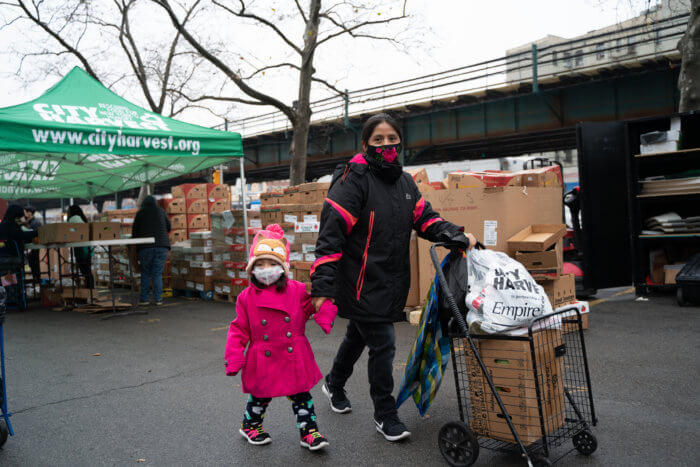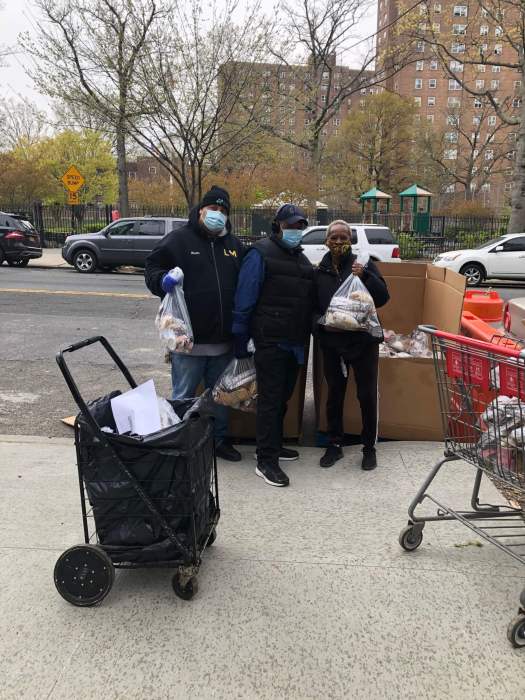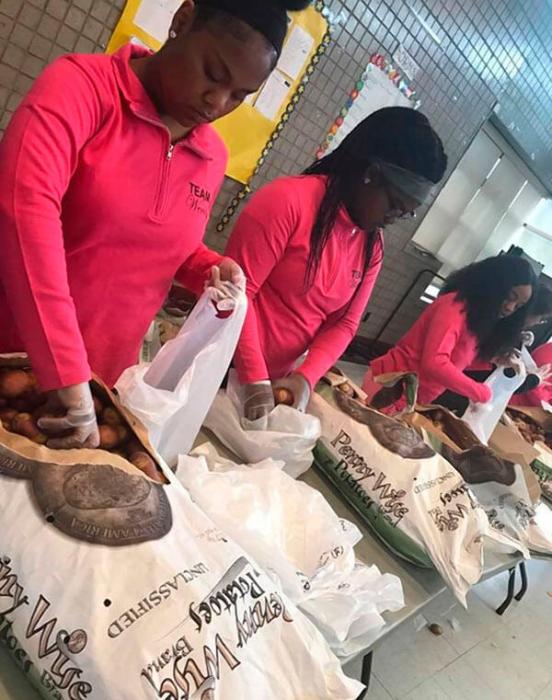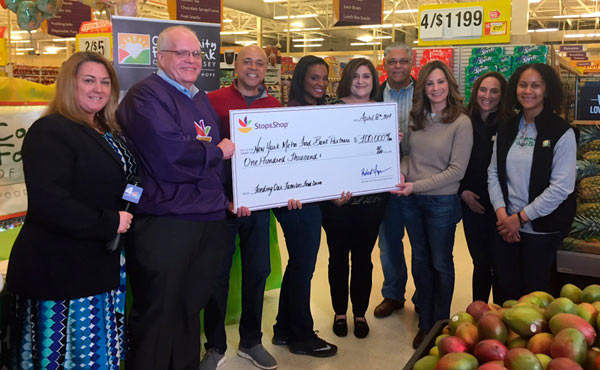With food prices at a 40-year high amid a summer of inflation, more shoppers are flocking to the city’s food pantries. Monthly visits to New York City food pantries and soup kitchens are up 68% compared to 2019, according to food pantry operator City Harvest’s analysis of FeedNYC data.
From January to June of this year, there was a 14% increase in visits to NYC food pantries and soup kitchens.
Linda Harris, a Castle Hill native and mother of four, said she felt priced out of her local supermarket chains where meat, eggs and fresh produce had been pushing the high $5-$7 range per unit. When she visited the Bread of Life food pantry on Elder Avenue, she said it was the first time she felt “relief” food shopping.
“It’s a problem. I remember I spent $90 in one supermarket trip and I know previously the same collection of items would’ve been half as pricey,” said Harris. “These food banks have some of the same stuff, some fresher stuff than these supermarkets do, but it’s much more affordable and within my means as a single mother.”
In the Bronx, there are 77 food pantries and 18 soup kitchens, according to city data. Food insecurity, a measure of the availability of food and individuals’ ability to access it, has been a prevalent issue in the South Bronx where more than 40% of its resident live in poverty.
“We’re in a very scary situation,” said Rabbi Schlomo Nisanov, founder and leader of Kehilat Sephardim Synagogue, one of the 400 food pantries and soup kitchens City Harvest serves across the city. “Inflation is a big thing. Now, we have people struggling to feed the most vulnerable, babies and senior citizens, who are homebound and rely on themselves to take care of them, which is very scary. I feel like things are going to get harder and harder to get by.”
According to City Harvest, their food pantries have rescued and delivered at least 75 million pounds of food this year, sustaining food rescue and delivery operations nearly 20% above pre-pandemic levels. Bronx Works officials say their food pantries provide 3,700 households with emergency food each month.

City Harvest’s partner food pantries saw that their significant rise in foot traffic in 2022 began when inflation took hold and vital government supports, like the federal Child Tax Credit and rent moratoria, expired.
“With prices surging for necessities like food, childcare and rent, all New Yorkers have to step up to help our neighbors in need,” said City Harvest CEO Jilly Stephens. “From the White House hunger summit later this month to our work with our network of more than 400 partner food pantries and soup kitchens, this Hunger Action Month we will work with countless everyday New Yorkers to ensure that all of our neighbors have the nutritious food they need to thrive — one day, one meal, one New Yorker at a time.”
Inflation has eased somewhat since its strong rise in spring, with a noticeable drop in nationwide gas prices. However, food prices are still really high, — in particular, cereal, which has been a main driver of food price increases in recent months — according to Erin Collier, an economist at the UN’s Food and Agriculture Organization in an interview with Bloomberg TV.
The price of food in America rose more in the past year than it has at any time since 1979 — a 13.1% increase over the past year — according to the United States Bureau of Labor’s Consumer Price Index. The price of eggs ballooned to 38%, flour is up 22.7%, chicken 17.6%, milk 15.6%, ground beef 9.7% and bacon 9.2%. Fruits and vegetables saw a 9.3% increase as well.
In its worst-case scenario, the United Nations estimates global food prices could jump another 8.5% by 2027, and rising fertilizer prices could also be contributing to higher food prices as costs are passed on to consumers.
Despite current government efforts to curtail the impact of record-high inflation, food prices are largely unaffected by those efforts. Excluding food and energy costs, what economists classify as “core” inflation was 4.6% for the 12 months ending in July — the smallest increase in nine months.
During a Senate Banking Committee hearing in June, Federal Reserve Chair Jerome Powell said that raising interest rates to fight inflation wouldn’t lower food prices. Powell said he didn’t expect gas or grocery prices to go down as a result of the Fed’s campaign of rate hikes, which are designed to dampen spending but can’t help fix insufficient supply.
For now, food pantries are doing what they can to help local shoppers and those on the back end of food insecurity with ongoing partnerships and monthly promotions where partners like W&P donate $2.50 for every Porter Lunch Box sold to help feed two families in need.
“I don’t know where the end is in sight is,” said Harris. “I used to think my supermarket was the reliable way to go. But with these prices nowadays, I ain’t returning until I know I can afford them.”
Reach Robbie Sequeira at rsequeira@schnepsmedia.com or (718) 260-4599. For more coverage, follow us on Twitter, Facebook and Instagram @bronxtimes.
























